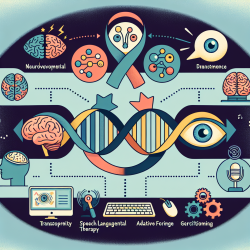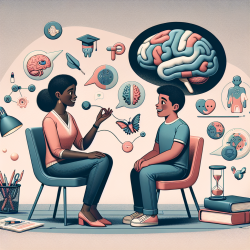Understanding CHAMP1 Disorder: A New Perspective
CHAMP1 disorder, a genetic neurodevelopmental condition, presents a complex challenge for practitioners. Recent research, titled Prospective phenotyping of CHAMP1 disorder indicates that coding mutations may not act through haploinsufficiency, sheds light on the mechanisms behind this disorder, offering new pathways for intervention and therapy.
Key Findings from the Research
The study conducted by Levy et al. (2023) involved prospective clinical evaluations of individuals with CHAMP1 mutations and deletions. The findings revealed significant differences in adaptive functioning across various domains, including communication, daily living skills, socialization, and motor skills, between those with mutations and deletions. These differences suggest that mutations may operate through dominant negative or gain of function mechanisms, rather than the previously assumed haploinsufficiency.
Implications for Practitioners
For practitioners, understanding the distinct mechanisms of CHAMP1 mutations versus deletions is crucial. Here are some actionable steps based on the research findings:
- Tailored Interventions: Recognize that children with CHAMP1 mutations may require different therapeutic approaches compared to those with deletions. Interventions should focus on enhancing adaptive functioning and addressing specific deficits in communication and motor skills.
- Collaborative Approach: Engage in multidisciplinary collaboration with geneticists and other specialists to develop comprehensive care plans that consider the unique pathogenesis of each child's condition.
- Embrace Data-Driven Decisions: Utilize data from assessments to inform therapy goals and track progress, ensuring that interventions are effective and tailored to the child's needs.
Encouraging Further Research
While this study provides valuable insights, it also highlights the need for further research to fully understand the mechanisms at play in CHAMP1 disorder. Practitioners are encouraged to stay informed about ongoing research and consider participating in studies that can contribute to the growing body of knowledge in this area.
Conclusion
Understanding the distinct mechanisms behind CHAMP1 mutations and deletions is a significant step forward in providing effective therapy for children with this disorder. By integrating these insights into practice, practitioners can enhance therapy outcomes and improve the quality of life for affected children and their families.
To read the original research paper, please follow this link: Prospective phenotyping of CHAMP1 disorder indicates that coding mutations may not act through haploinsufficiency.










